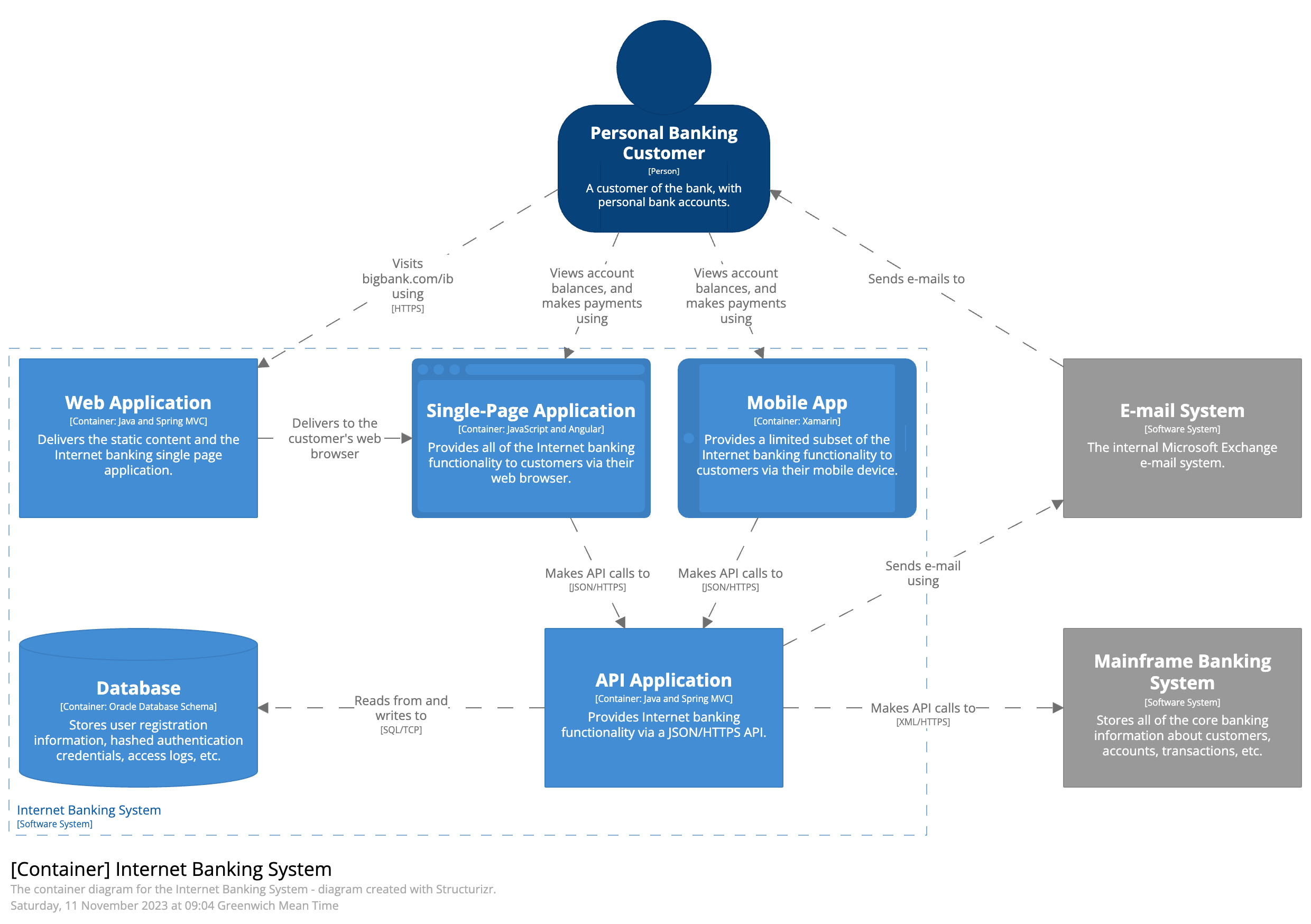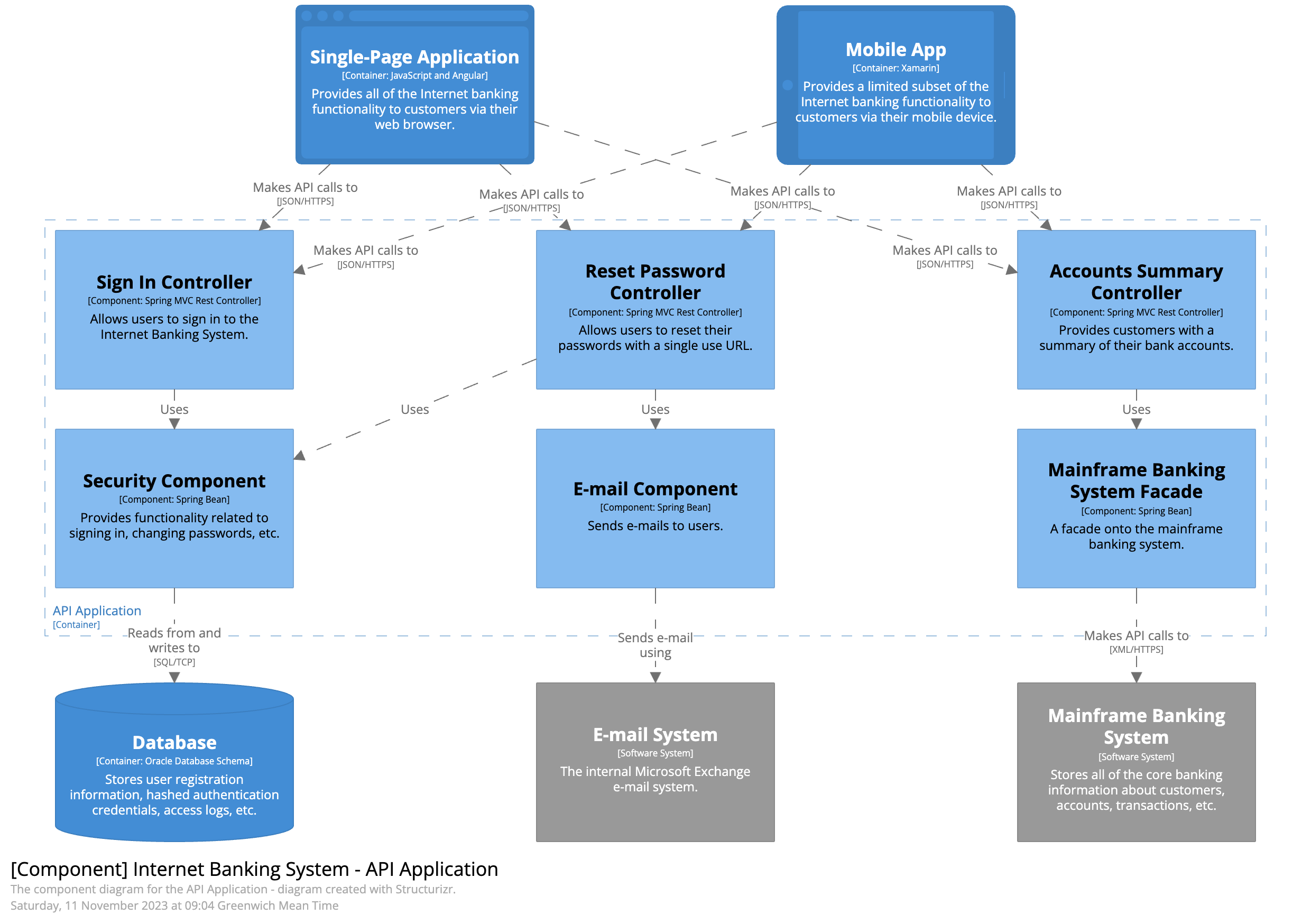C4 model,
The C4 model, developed by Simon Brown, is a lightweight visual representation for describing and communicating software architecture. "C4" stands for Context, Containers, Components, and Code, which represent different levels of abstraction in the architecture.
1. Context
The highest level of abstraction, focusing on the system's big picture and its interactions with external entities such as users, systems, and other stakeholders. Context diagrams provide an overview of the entire system and its surrounding environment.
2. Containers
The next level down, describing the high-level technology choices and how the system is divided into containers or runtime environments, such as applications, databases, or services. Container diagrams illustrate these containers and their interactions. 
3. Components
At this level, the focus is on individual software components within each container. Component diagrams show the key components, their relationships, and how they work together to deliver the system's functionality. 
4. Code
This level represents the lowest level of abstraction, dealing with the internal implementation details of individual components. While not always necessary, code diagrams can be used to dive into specific portions of the system's source code when needed.